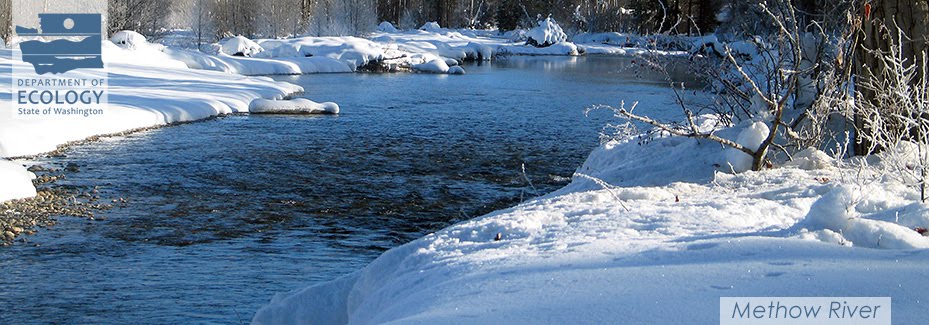 We want to clarify some of the broad findings of the recent study, “Toxics in Surface Runoff to Puget Sound.” Here are the facts:
We want to clarify some of the broad findings of the recent study, “Toxics in Surface Runoff to Puget Sound.” Here are the facts:The surface runoff study monitored levels of toxic chemicals in streams representing four major land cover types: commercial/industrial; residential; agricultural; and forest/field/other undeveloped lands.
The purpose was to compare concentrations (intensity at the site) and loads (fraction of total contribution) of hundreds of toxic chemicals.
Overall the study found concentrations of toxic chemicals in runoff from commercial/industrial, residential, and agricultural lands to be significantly greater than in runoff from forested and other undeveloped lands. The higher concentrations result from more intense human activities in developed lands.
The same study also noted that despite low concentrations, forested streams contribute the majority of the load (total weight) of several toxic chemicals to Puget Sound and the Straits because they cover such a large part of the watershed.
This pattern reflects the effect of multiplying stream concentrations by the area of land in forest cover, and does not serve as an indication of pollution from forest operations. Rather than suggesting that forestry needs to be addressed to reduce toxics, the actual study findings suggest that forestry is the least polluting land use.
The study suggests that our highest benefit to reduce toxics in Puget Sound might most likely be obtained by focusing control efforts on other land use types.
The highest levels of toxic chemicals found where the most people live and work
Not surprisingly, water draining from commercial/industrial lands, both during storms or between storms, generally carries the highest levels of toxic chemicals of any of the land cover types we surveyed. For example, dissolved copper concentrations were five times higher in stormwater from commercial areas than from forested lands.Stormwater from residential and agricultural lands also contains higher levels of many toxics compared with forested lands, but generally less than compared with commercial/industrial lands. Residential stormwater typically had twice the dissolved copper levels and agricultural lands had nine times the levels as in forested areas.
Forested and other undeveloped lands cover the majority of the Puget Sound watershed
Forested and other undeveloped lands cover 83 percent of the Puget Sound watershed. Since higher-elevation areas tend to be less developed than the Puget Lowland and have higher precipitation rates, these areas contribute 92 percent of the water that reaches Puget Sound. That’s good, because fewer human activities influence the water quality where most of the water is generated.When we add up the contributions from different land cover types across the entire Puget Sound watershed, undeveloped lands contribute 78 percent of the dissolved copper. The concentrations are lower for forested lands, but a low concentration multiplied by a high volume means a high load at the Puget Sound scale. Because commercial lands produce only 0.4 percent of the water draining into Puget Sound, a high concentration multiplied by low volume means a lower load when added up across the ecosystem.
Loads at the Puget Sound scale mask hot spots in the ecosystem
Puget Sound is not always the most sensitive water body. Considering only total chemical load for the Puget Sound watershed as a whole may mask hot spots in the ecosystem where high levels occur. Smaller, more developed streams are subject to higher levels of human activities and less dilution from a larger watershed. High copper concentrations have sensory impacts on salmon. Copper inhibits their ability to migrate and avoid predators.Are toxics a problem in undeveloped lands?
Generally not. Runoff from forested lands isn’t pure, meaning it still may contain toxic chemicals and other potentially harmful substances. However, sources of these compounds are less likely to be found in forested areas. For example, only one sample out of 32 we collected from forested lands during the project failed to meet the dissolved copper chronic criteria. Runoff from agricultural and commercial lands did not meet the dissolved copper chronic criteria more frequently, four and five times, respectively.Loads from forested lands represent natural and human sources
Our toxics in surface runoff study was not designed to identify the specific sources of the toxic chemicals found in runoff from the various land cover types. Loads from forested lands may represent naturally occurring chemicals, chemicals deposited from the atmosphere, or other human sources within the forested watersheds. Since there are few if any specific sources of toxics associated with forestry management, control of sediment runoff would be the primary mechanism for reducing loading from the forest environment. Programs are underway on private and public forest land to minimize sediment delivery to streams. These programs are under specific timelines and monitored for progress.Atmospheric deposition can be a major source of pollutants to otherwise undeveloped areas. While not a likely pathway for dissolved copper, other chemicals like mercury and PBDEs commonly reach pristine areas via atmospheric deposition. In addition, human activities do exist in forested lands. Sources associated with these include motorized vehicles, building materials, and incidental spills. Existing programs may address these sources.

No comments:
Post a Comment